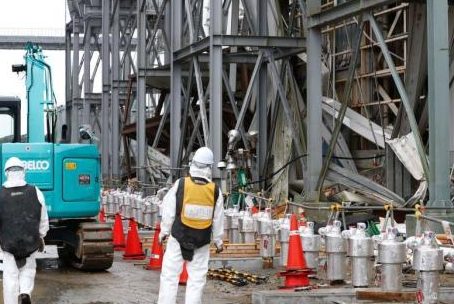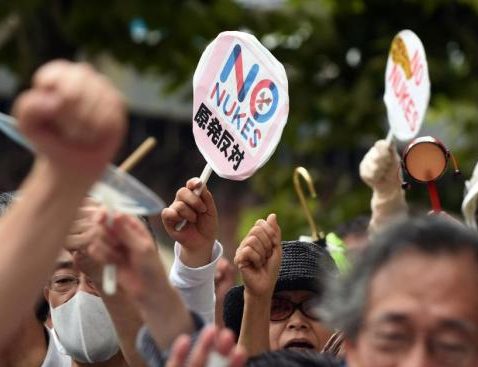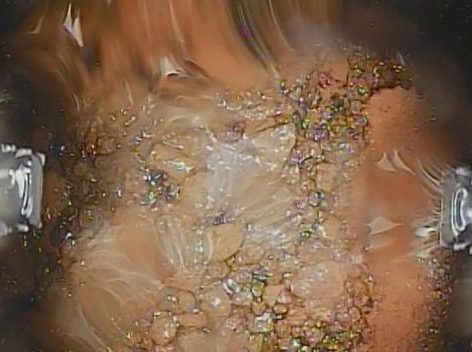April 10 According to a report in Hong Kong’s Dabao on the 10th, 10 years have passed since the accident at the Fukushima Daiichi nuclear power plant in Japan, but the work of cleaning up the mess has not been completed. In addition to the unresolved nuclear wastewater problem, the Japanese government is also facing the cleanup of high-radiation nuclear fuel debris, and tens of thousands of people in Fukushima Prefecture have homes that are difficult to return…
The analysis pointed out that all kinds of circumstances have made the reactor scrapping and evacuation work planned to be completed from 2041 to 2051 blind. Japan’s “basic decision” to discharge nuclear sewage from the Fukushima Daiichi nuclear power plant into the sea will not only affect the domestic ecological environment, but also cause major worries to itself and many neighboring countries.
How to clean up high-radiation nuclear fuel debris?
On February 28, Tokyo Electric Power Company announced that 566 spent fuel rods from reactor 3 of the nuclear power plant would be removed. However, there were 1,007 spent fuel rods in reactors 1 and 2 that needed to be transferred to safe places, and the cumulative cleaning of 880 tons of fuel debris in reactors 1 to 3 was not clear.
In addition, a large amount of radioactive waste will be generated during the reactor scrapping process, but discussions on follow-up treatment methods and treatment sites have not yet begun.
[Quemy 2: 36,000 people in Fukushima County have a home and it is difficult to return! ]
According to the report, the Fukushima Prefectural Government said that there are still about 36,000 people living a bumper life inside and outside the prefecture, leaving seven cities and villages in the polluted “difficult areas of returning home”.
Although the Japanese government has set up specific reconstruction strongholds to seek to take the lead in decontamination to re-oculate the people, it has not given a specific timetable for going out to pollut and evacuate, and the people have said that it is “unaforeseen the future”.

[Que3: 15 places around the world still restrict the import of Japanese food]
Although the Japanese government has repeatedly emphasized the safety of the discharged nuclear wastewater, TEL once said that it has filtered the nuclear wastewater, removed high-level radioactive substances such as strontium and caesium, leaving tritium that is relatively difficult to remove and less harmful to human health. However, some media pointed out that in 2018, TOW Power admitted under external pressure that nuclear wastewater contains other radioactive substances in addition to tritium.
Once nuclear wastewater is discharged into the sea, it will have a significant impact on the ecological environment and hit Japan’s local fisheries. According to Japan’s Kyodo News Agency, there are still 15 countries and regions that maintain import restrictions on Japanese food due to the Fukushima nuclear accident.
In June 2020, the National Federation of Fisheries Associations of Japan unanimously passed a resolution to “firmly oppose” the discharge of nuclear wastewater into the sea, and submitted a petition to the government. The Japanese government was originally scheduled to issue a decision to discharge nuclear wastewater into the sea in October 2020, but it was temporarily put on hold due to strong opposition at home and abroad.
However, on the 9th, Hiroshi Inayama, Japan’s Minister of Economy and Industry, said: “Reputation damage will definitely occur, and we have to deal with it with all countermeasures.” The Japanese government is discussing compensation programs for fisheries.

Japan can’t “once and for all” if nuclear sewage is discharged into the sea
According to a report by the Japan Broadcasting Association (NHK) on April 9, the Japanese government has basically decided to discharge nuclear sewage from the Fukushima Daiichi nuclear power plant into the sea. The government will hold a relevant cabinet meeting on the 13th to formally decide whether to discharge into the sea.
Analysis points out that in addition to affecting the domestic ecological environment, Japan’s move also creates a major worry for itself and many neighboring countries. Even the United States, far across the Pacific Ocean, cannot rest assured.
South Korean media pointed out that the polluted seawater will reach Jeju Island in 220 days and the west coast of South Korea in 400 days. The German Antarctic Marine Agency warned that if Japan discharges all wastewater into the sea, the whole Pacific Ocean, including the United States, will face a high radiation threat in less than half a year. At that time, not only coastal residents will be directly injured, but also the marine environment and organisms will be polluted, eventually causing secondary harm to human health.



